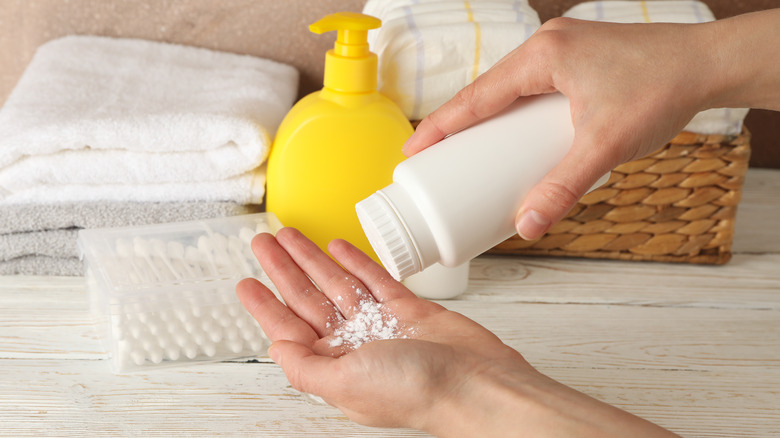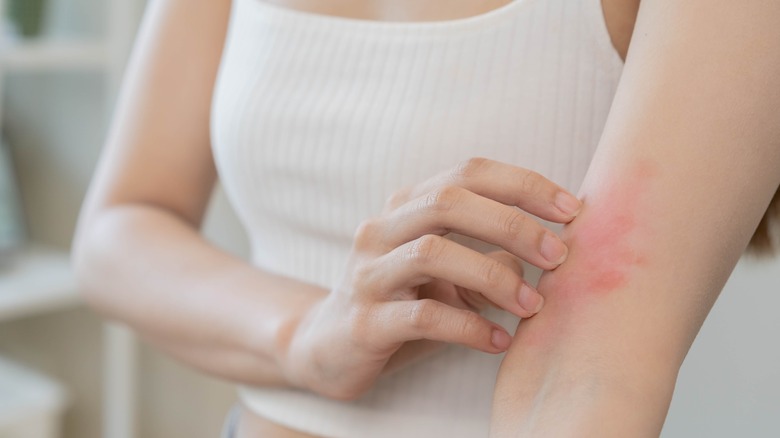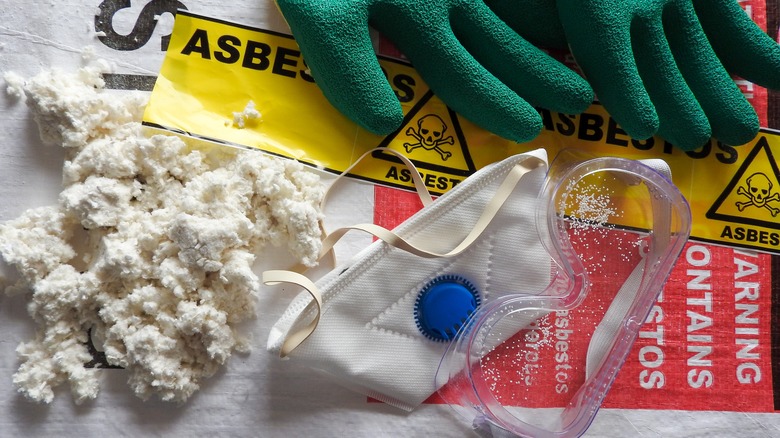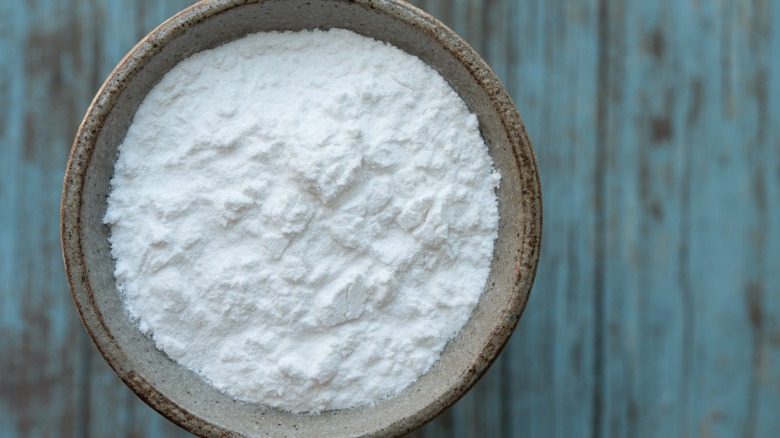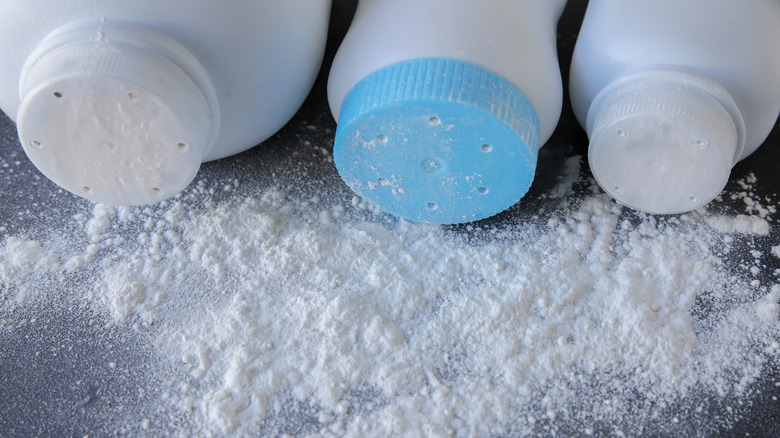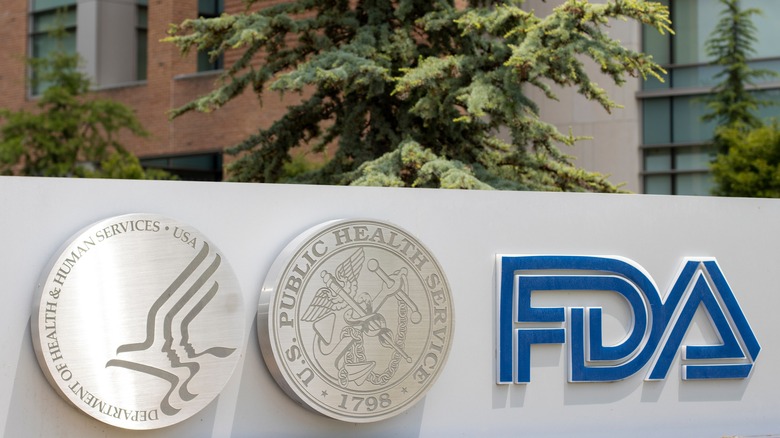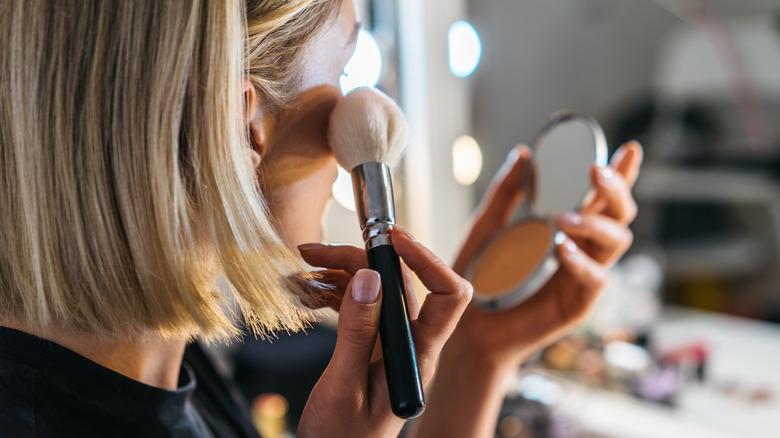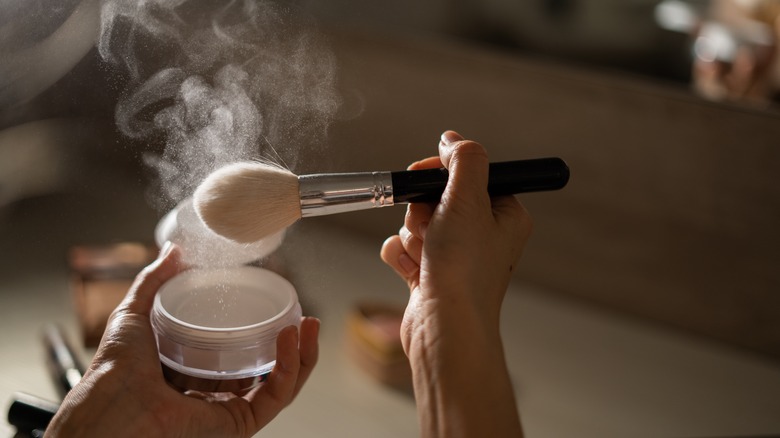Talc-Free Powder Should Be A Must-Have In Your Makeup Arsenal. Here's Why
When it comes to health and beauty products, one of the most common ingredients is talc. Products that include this ingredient promise to keep you feeling dry and smooth, whether tamping down the natural oils on your face or being used to prevent chafing on the body during the warmer months of the year. After centuries of use, the safety of talc is rarely considered by beauty companies. Instead, it has become a staple ingredient in many everyday products, from baby powder to bronzer.
Unfortunately, something with a long history of use doesn't necessarily mean it's safe. In recent years, more research has been done into the side effects of talc, yielding some questionable results that have caused many consumers to seek alternative products. Luckily, the beauty world is constantly evolving, so new substitutes for this moisture-absorbing ingredient have been developed, with some promising better, harm-free results than the original.
They're gentler on the skin
If you have sensitive skin, products that include talc could cause irritation, rashes, and even hives, especially in more delicate areas. This is because it's such a finely milled powder — instead of just sitting on the skin, it can sink into your pores and prevent sweat and oils from evaporating. This is great to keep you feeling dry, but for those with sensitive skin, it can cause new issues and worsen existing ones.
Talc-free alternatives, however, aren't quite as acceptable and are usually made of more skin-safe materials like cornstarch or arrowroot powder. With that being said, however, something that's more "natural" doesn't necessarily mean it won't irritate your skin. Always check the ingredients list, especially if you have sensitive skin, and note any inclusions that you suspect might be the reason behind irritation or flare-ups. Everyone's skin handles certain ingredients differently, and talc-free alternatives are no exception to this rule.
They carry less cancer risk
The biggest reason that people are beginning to turn their backs on talc is, without a doubt, the association with asbestos. In 2019, Johnson & Johnson pulled their baby powder from shelves after a batch was found to contain asbestos. This mineral has been proven to cause mesothelioma and increase cancer risk when inhaled. The lawsuits are still rolling in as many seek compensation after years of using talc-based products. However, the Food and Drug Administration (FDA) denies talc poses significant dangers to consumers.
Currently, the FDA is investigating the impacts of talc and admits that asbestos and talc deposits are frequently found in close proximity, so there is a high chance that traces of asbestos could be found in talc products. Despite this, they don't currently require brands to test the asbestos levels in their talc-based products, so there's still a risk that they're unsafe.
They're made of organic materials
Talc is a naturally-occurring mineral, but one of the bonuses of talc alternatives is that they're typically plant-derived. Standard options include oat flour, rice starch, arrowroot starch, tapioca starch, and corn starch. These choices are easy to find in the grocery store if you're looking for an alternative to talc-based body powder, but they're also available in commercially-produced products. Bottles will usually be visibly marked as talc-free, but look at the ingredients list for more specific information on what's in the product.
In makeup, silica, zinc oxide, and mica are more common replacements because they appear smoother on the skin and are more shelf stable. Many brands are jumping ahead of the curve and removing talc from their products early of any concrete action from the FDA, likely because the ingredient is already banned in the European Union. Because of this, it's fairly easy to find alternatives to cosmetics that contain talc, even on a drugstore level.
Alternative options are often cheaper
Talc-based body powder isn't a particularly expensive product, usually sitting at around $3 to $10, depending on the bottle size. However, alternative options can give you more bang for your buck and serve as a multi-use product. Starches and flours purchased from the grocery section that work as alternatives usually come in larger quantities than a typical bottle. They can also be used in your kitchen for baking or as a thickener for sauces.
Unfortunately, however, talc alternatives used for cosmetics are usually slightly more expensive, and they require more testing to nail down that silky soft skin feel consumers know and love. This means you might be paying a bit more for talc-free makeup and waiting longer for new options to be developed, but they're far from unavailable on the market. Well-loved brands like Milk Makeup, Pacifica, Honest Beauty, CoverFX, and Kosas have already nixed the ingredient from their products as part of their commitment to developing clean beauty formulas.
Alternatives are more regulated by the FDA
While it might seem counterintuitive for the FDA to take a closer look at talc alternatives than talc itself, it's the truth of the current situation. Until the FDA concludes its research on the potential dangers of talc or places more testing requirements on brands that use the mineral to ensure products don't contain asbestos, alternatives are the safer bet, especially food-safe ones like cornstarch and rice starch.
So far, none of the common talc alternatives have been marked as unsafe for their intended use or faced any major lawsuits saying they caused cancer. It's always difficult to tell how much an ingredient has been tested, especially when the FDA is already under scrutiny for their current statement on the safety of talc, but if you want to get a second perspective, check and see if your alternative of choice has been recalled or banned as an ingredient in other countries.
Talc-free powders are less cakey
Regular talc body powder absorbs any moisture it's near, making it a great option to immediately dry out an area where you're sweating or chafing. Still, it also tends to roll into unsightly, uncomfortable clumps. Talc-free alternatives do this as well but are usually less extreme. They're also easier to remove, so you're not stuck with a gross, clumpy mess even after you shower.
Talc in makeup has long been regarded as the magic ingredient to create a silky smooth, matte complexion, but it can also leave you looking cakey and ultra-pale, especially if you have oily skin. While the ultra-powdered look used to be quite popular, nowadays, the trend is leaning more towards a second skin aesthetic that looks more natural both in-person and on camera. Powders that forgo talc in favor of mica or silica are usually better for creating this flashback-free look.
They're less easy to inhale
The primary concern when it comes to asbestos, and by extension, talc, is inhalation. Tiny particles of the mineral float into the air and are inhaled into your lungs, potentially causing respiratory issues along with the more commonly known risks of mesothelioma and cancer. This is especially common with asbestos found in health and beauty products because talc is an incredibly fine powder that tends to linger in the air, causing you to inhale a bit as you breathe in. These incredibly fine particles partially make it a common ingredient — it looks and feels seamless on the skin — but also increases your risk of harm.
In contrast, talc-free products are still finely-milled and capable of producing lingering dust, but the particles are not quite small. This means that, on the off chance that one of these ingredients is also harmful, there's less of a risk of inhalation. Of course, the chances of this are meager, but nothing beats a bit of peace of mind when it comes to your beauty routine.
